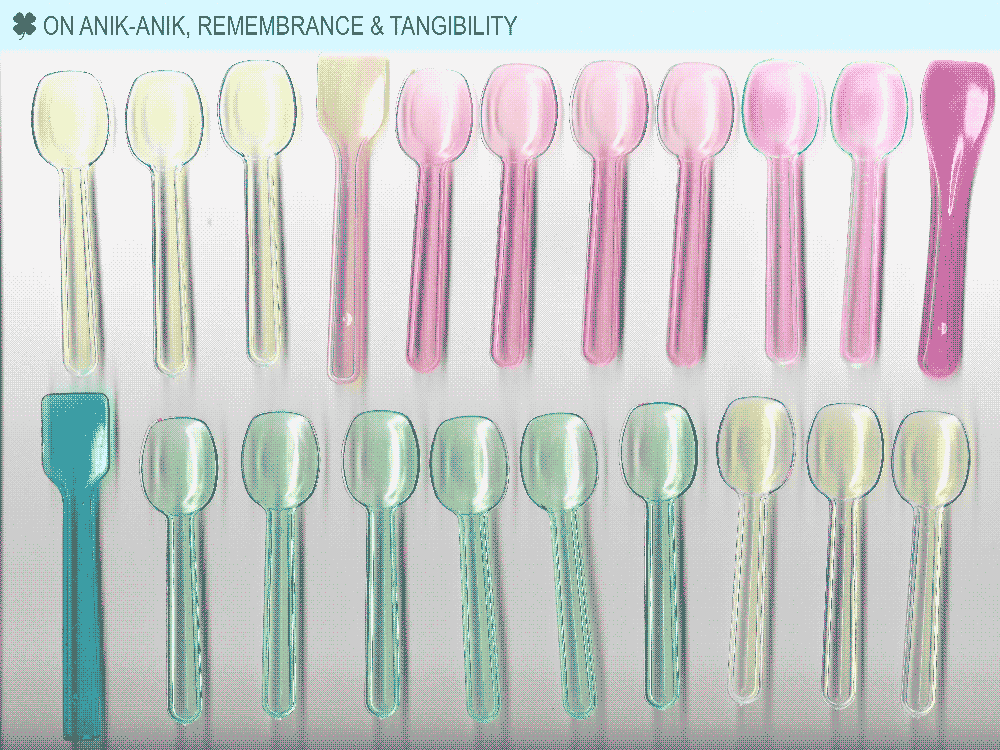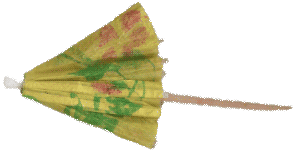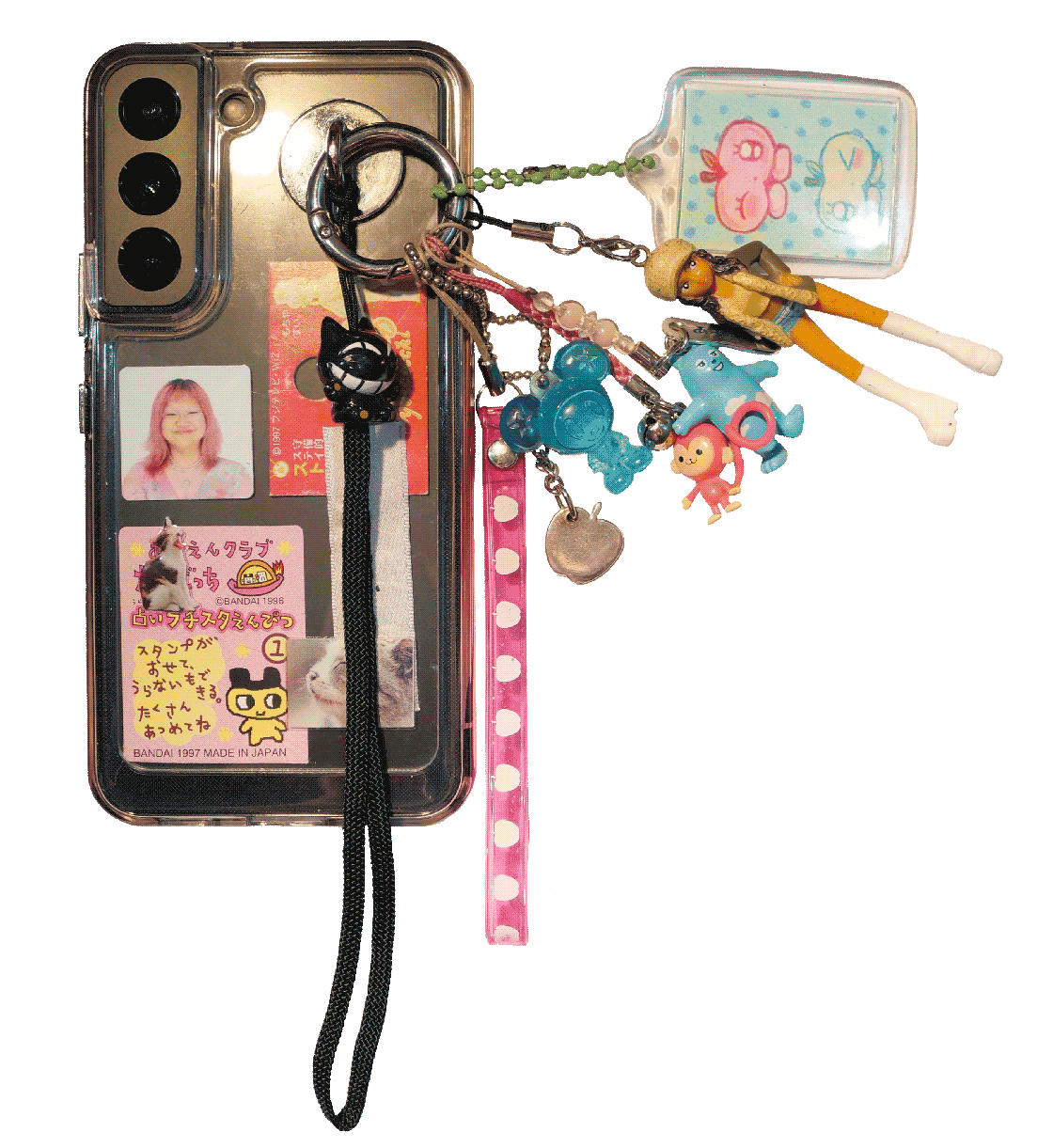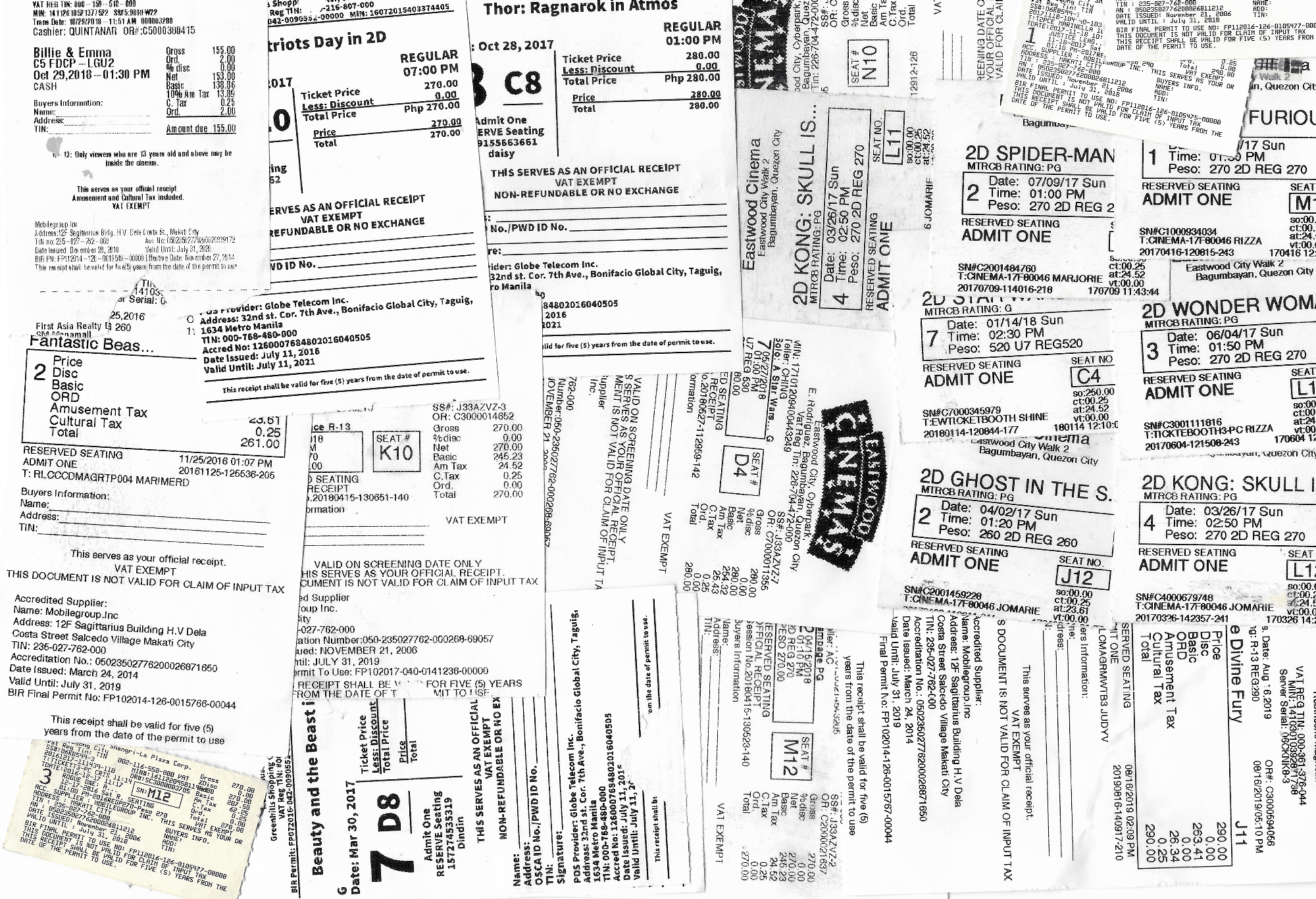Bao
Am I only me
when I'm online?
On the patchwork personality of the "anik-anik girlie"
The first time I recall collecting anything was from when I was a kid, my childhood marked by weekly visits to the nearby ice cream shop. I'd collect these colorful, practically neon plastic spoons they gave out with each cup of ice cream. Looking back, I unconsciously found them pretty and wanted to keep them for no practical reason. I've counted around twenty of them: twenty weeks, or five months, of memories of scorching Philippine summers made bearable with sweet, cool treats.

Another object from my childhood I still have with me to this day is a mini paper umbrella from the mango shakes my late grandfather would order for himself in restaurants. In true frugal Asian parent fashion, my mom and dad never allowed me to order one of my own; as a compromise, my grandfather would offer his umbrellas to me. The remaining one I have is yellow. I can't properly open it up anymore, but its flaws don't matter much to me; what remains is the memory of a family member's small-but-not-so-small act of kindness.

All these can be considered anik-anik, a Filipino umbrella term for anything and everything. However, only in recent months has the use of this term been debated on, particularly online. As someone who has been collecting a variety of items over the years, I've observed that current constructions of anik-anik can be classified as either kept or consumed. Kept items are those we collect for practical, impractical, and nostalgic purposes. While anik-anik traditionally refers to these, the term has acquired a more consumerist connotation in the past few years with reference to toys, cute accessories, and collectibles. These are consumed items as we purchase them brand new or second-hand.

In conjunction, the "anik-anik girlie" identity has gained traction during the pandemic and is used by the youth to describe those in their teens or twenties who show off their collections on sites like Twitter and Instagram. There is indeed a heavy emphasis on the aesthetic appeal of anik-anik posted online. What now has grown to characterize the "anik-anik girlie" are highly curated collections, artfully organized in photographs or short-form content. These collections are a projection of their personality, which may be perceived, to some extent, as perfect.
It is no surprise that the identity of the "anik-anik girlie" emerged at the height of the pandemic, where social media was the sole window in which we could perceive each other. But it also became apparent then how our current social media landscape has overstimulated us to the point of overwhelm, disconnect, and isolation. I like to think that owning these little trinkets served to physically ground us during a time when life seemed so out of reach. Sharing them online allowed us to express that even in the midst of the pandemic, simple joys like these could soothe us. Ultimately, owning physical keepsakes in a society blindly accelerating towards a wholly digital universe is a tangible manifestation of our existences and the vibrant lives we lead.
Post-Internet boom, social media has led us to detach ourselves from our physical world as our highly curated and performative online identity becomes inextricable from the selves we present offline. Social media is now an undeniable factor in how we collect—we are influenced by others' purchases as they share their endearing, nostalgic setups online, and when we perceive these to be desirable, it becomes something we must attain for ourselves to the point of overconsumption.
Another factor that drives overconsumption would be trends. In order for people to participate in a trend, it must possess a label. In turn, attached to said trend is a personality that people either already relate to on some level or aspire to have. This can only be achieved by buying certain products that are in accord with said lifestyle and aesthetic. But what is fascinating is that most trends originate from the over-labeling of already existing phenomena. Similarly, the act of collecting that existed long before the Internet has in fact been repackaged into a new, visually palatable trend on social media: the "anik-anik girlie". This over-labeling, when combined with the desire to form an identity through purchases, leads to widespread overconsumption.
When we share our collections online, how do we reconcile our offline and online identities? Is there a need to separate our authentic self from the digital persona we've created that we present to others? Or because we use social media as a platform to share bits and pieces of our lives, can our digital selves be considered authentic in a way? These are questions I continually ask myself as my collection of anik-anik grows.
